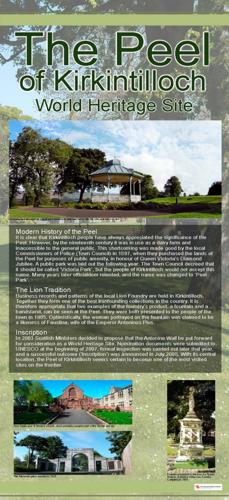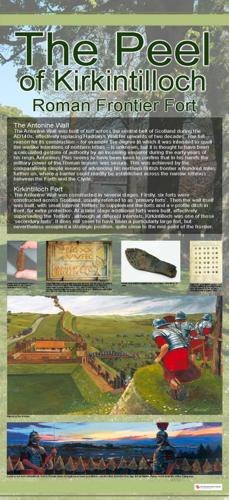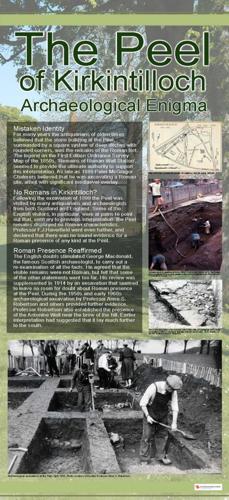Peel Park Kirkintilloch
About Peel Park
Peel Park is a place of historical significance. The line of the Antonine Wall, which was for a period the north-western frontier of the vast Roman Empire, passes through. The Park also has links to mediaeval times when a castle was built in the 13th century by the Comyn family. It guarded one of Scotland's first Burghs of Barony, a status accorded to Kirkintilloch in the year 1211.
Other objects of significance in the park are the bandstand and fountain made in Kirkintilloch by the Lion Foundry, famous for its decorative ironwork. Benefactors donated both to the people of Kirkintilloch in 1905. They now stand as a memorial to the foundry, which closed in 1984.
It has recently undergone extensive restoration by means of a Heritage Lottery Fund Grant and was awarded World Heritage Status in July 2008 as part of the "Frontiers of the Roman Empire" section alongside Hadrian's Wall and the German Limes.
|
The fort at Kirkintilloch occupied a strategic position in Peel Park, quite close to the mid-point of the Antonine Wall frontier. |
 |
|
The high mound in Peel Park marks the site of a mediaeval castle built by the Comyn family, probably in the 12th or early 13th century.
|
 |
|
In the 20th century excavations by Scottish archaeologists George Macdonald and Professor Anne Robertson confirmed a Roman presence at Peel Park. |
 |
|
In July 2008 The Antonine Wall was declared a UNESCO World Heritage Site as part of the “Frontiers of the Roman Empire” section alongside Hadrian’s Wall and the German Limes
|
 |
